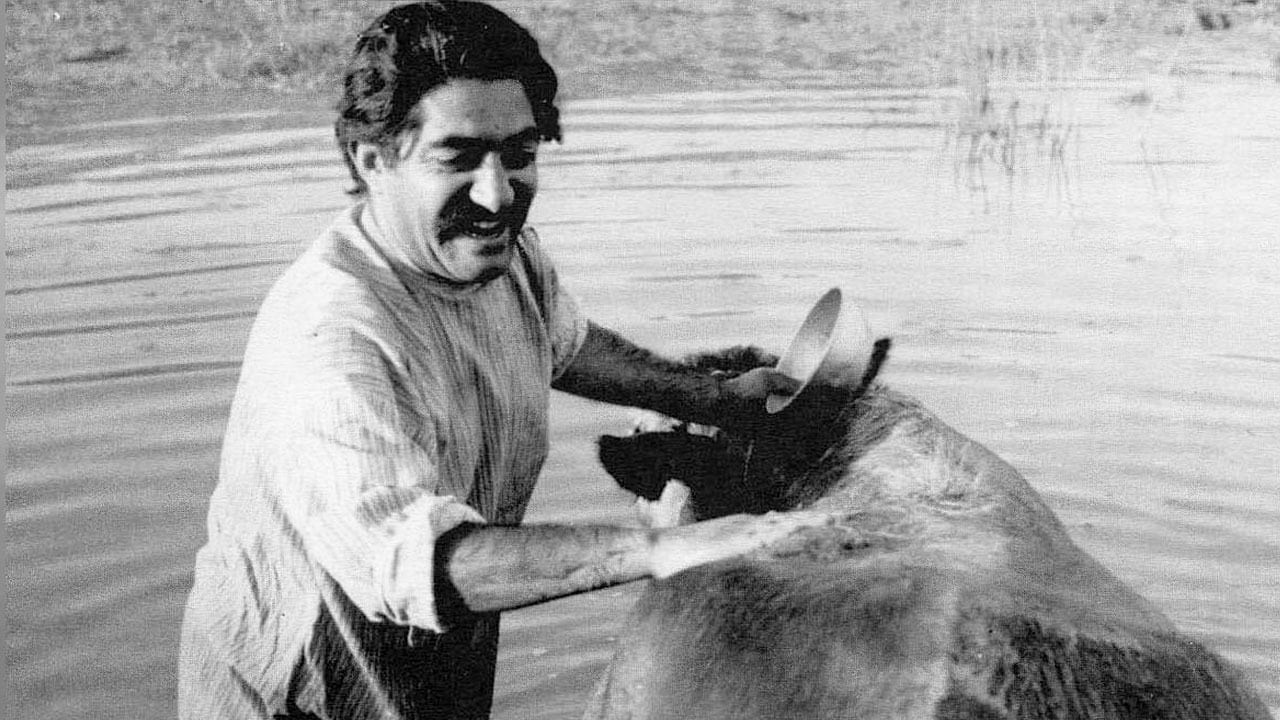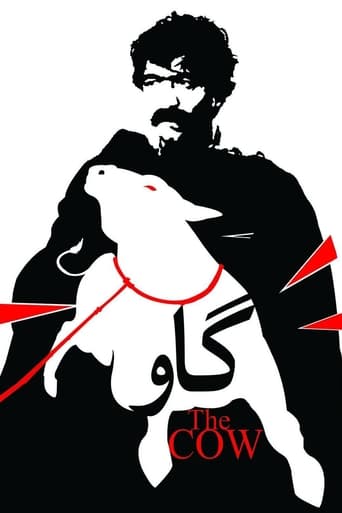StunnaKrypto
Self-important, over-dramatic, uninspired.
Afouotos
Although it has its amusing moments, in eneral the plot does not convince.
Lollivan
It's the kind of movie you'll want to see a second time with someone who hasn't seen it yet, to remember what it was like to watch it for the first time.
Bea Swanson
This film is so real. It treats its characters with so much care and sensitivity.
morrison-dylan-fan
Nearing the end of ICM's best of 1969 movie poll,I searched for a final title to view. Seeing a post by fellow IMDber OldAle,I was excited to read praise for an Iran New Wave (INW) title, which led to me going down to the farm.View on the film:Farming closer to the Neo- Realist movement than the French New Wave, writer/director Dariush Mehrjui & cinematographer Fereydon Ghovanlou give the village a dour appearance,where the subtle use of black and white shadows lining the streets reflecting what lays at the dark heart of the village. Lovingly following Hassan's feeding of his cow, Mehrju and Ghovanlou take all that Hassan holds dear with flickering camera moves snapping Hassan's breakdown. Dipping into the dark human horror which would be explored the same year in the Czech New Wave film The Cremator, Mehrjui whips Hassan with inhumane treatment from the the locals, captured in frenzied dissolves, fading to the overlooking figures in a landscape.Born from Gholam-Hossein Saedi's play,the screenplay by Mehrjui features the most prominent edge from the Iran New Wave (INW) via Mehrjui dissection of the greed and pettiness followed by all of the rural locals, with the thought they show towards giving Hassan the bad news,burning into vile outbursts as Hassan's mental state degrades. Becoming completely separated from the villagers, Ezzatolah Entezami gives an incredibly expressive performance as Hassan,whose breakdown is treated with a gradual, earthy realism by Entezami,as Hassan looks in hope of seeing the cow on the field.
Jackson Booth-Millard
The title of this Iranian film made it really obvious what the story would involve, but not necessarily in the way you would expect, I found it listed in the book 1001 Movies You Must See Before You Die, and I hoped it would be worth it. Basically in a remote and desolate village, middle-aged villager Masht Hassan (Ezzatolah Entezami) has a close relationship with his cow, the only one in the village, Hassan is married, but has no children. When Hassan goes away for a short time, the villagers look after his beloved and pregnant cow, but they find it dead. Knowing how much Hassan cherishes the cow, the villagers fear his reaction when he returns, so they decide to cover up the death and dispose of the corpse. When Hassan returns, they have covered up all evidence of the death, and they lie to him, telling him that the cow ran away. Hassan is unconvinced that his cow would ever run away, he is devastated and finds great difficulty in confronting by his loss, and the loss of livestock affects his social stature in the village. Hassan starts to spend more time in the barn, his grieving pushes him over the edge, and he has a nervous breakdown. Hassan goes insane and has developed boanthropy, a psychological disorder in which he believes himself to be a bovine, in other words, he believes he is the cow. Hassan has incorporated many cow-like mannerisms, including walking on his hands and knees, and eating hay, and the villagers cannot snap him out of it. In the end, his wife (Mahin Shahabi) and the villagers try a drastic method to cure his insanity, tie him up and drag him up a hill, it ends in tragedy when he runs away, and he falls to his death. Also starring Jamshid Mashayekhi as Abbas, Ali Nassirian as Islam, Khosrow Shojazadeh as Boy and Jafar Vali as Kadkhoda. I can see why this is considered an influential film, apparently it was banned as well, it is a very simple story, with themes of poverty, superstition and paranoia, it is both strange and fascinating to watch, a terrific drama. Very good!
Dustin Luke Nelson
Iranian director Daruish Mehrjuti's 1969 masterpiece is an all too forgotten work of film-art in the canon. The piece explores inter-community relationships and the life changing forces of nature, what ties man to his surroundings, better than any contemporary American film could, and as so few American films have. The film follows Hassan, an Irani peasant, who owns the only cow in his village. The tight frames and slow pacing reveals a special relationship between Hassan and his cow. Which creates an especial pressing moral dilemma for the town when they discover the cow dead while Hassan is away. What follows is a dark harrowing vision of the depths of the human psyche and man's dependency on nature for survival. Shot in harsh black and white, it takes on the luscious countryside of Iran and the strength of community and the fallibility of human kindness. Hassan's journey is an engaging, dark tale that has been lauded as a controversial film at Cannes and a difficult digest for modern viewers. But few films pack the emotional intensity of Mehruji's film.
clevelandrachel
The Cow, Gaav (1969) is the second feature film by director Dariush Mehrjui. It was the second film to be financed by the Shah of Iran but promptly banned after completion when the Shah felt its portrayal of simple village life in Iran gave the wrong impression to outsiders. The film was smuggled out of Iran in 1970, and subsequently won "critics choice" at the Venice Film Festival.The Cow (originating from a novel by Iranian author Gholam-Hossein Saedi) portrays the obsession, loss of faith and demise of a poor rural village that loose their single salable commodity - a cow. Hassan, played by Ezatollah Entezami (who received best actor at the Chicago Film Festival), has a face that vividly captures his physical and emotional change after a breakdown when he becomes the cow. Mehrjui uses theater actors with "compelling faces" as key elements in the cinematography (Feridun Ghovanlu), as did the Italian Neo-realist.The film explores the looming fear of a foreign invader as the villagers come to believe Hassan, in his cow-like state, will be captured in cross-border raids from rival tribes. Politically this is reminiscent of the Shah's constant allusions to the neighboring "Arab threat" over oil. While set in traditional, rural Iran, Mehrjui shows an alternative view of Iran where collective fear and poverty can cycle in hopeless desperation. Viewers of The Cow are left to question the very root of human dignity.

